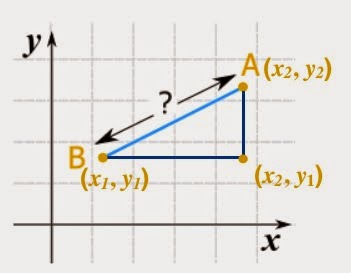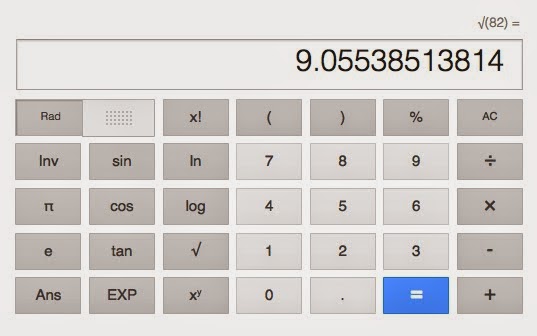Happy Monday! Today we started Unit 7: Square Roots and Pythagorean Theorem.
Today's lesson was an introduction to
SQUARE ROOTS. It's actually easier to start with SQUARES, and then talk about square roots.
To square a number, we just multiply it by itself.
For example, 5 squared = 5 × 5 = 25
When we take a number and multiply it by itself, we call the product a PERFECT SQUARE.
5 × 5 = 25
25 is a perfect square, because 5 × 5 = 25. We can also say that 5 squared is 25.
Square roots go the other way: since 5 squared is 25, the SQUARE ROOT of 25 is 5.
A square root of a number is ...
... a value that can be multiplied by itself to give the original number.
A square root of 9 is ...
... 3, because when 3 is multiplied by itself we get 9.
It is like asking:
What can we multiply by itself to get this?
The first 12 squares:
| 1 Squared |
= |
12 |
= |
1 × 1 |
= |
1 |
| 2 Squared |
= |
22 |
= |
2 × 2 |
= |
4 |
| 3 Squared |
= |
32 |
= |
3 × 3 |
= |
9 |
| 4 Squared |
= |
42 |
= |
4 × 4 |
= |
16 |
| 5 Squared |
= |
52 |
= |
5 × 5 |
= |
25 |
| 6 Squared |
= |
62 |
= |
6 × 6 |
= |
36 |
| 7 Squared | = | 72 | = | 7 ×7 | = | 49 |
| 8 Squared | = | 82 | = | 8 ×8 | = | 64 |
| 9 Squared | = | 92 | = | 9 × 9 | = | 81 |
| 10 Squared | = | 102 | = | 10 ×10 | = | 100 |
| 11 Squared | = | 112 | = | 11 ×11 | = | 121 |
| 12 Squared | = | 122 | = | 12 ×12 | = | 144 |
Click here for today's homework














